
How much does a fuel tank actually hold?
Do you know how much fuel your car's tank holds? 40, 50 or maybe 70 liters? When was the last time you charged? And how much it turned out "up"? Two Ukrainian media decided to answer this question by conducting a very interesting experiment.
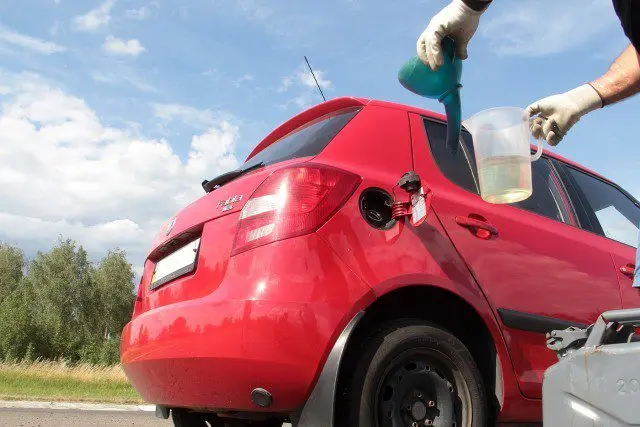
The essence of the experiment itself is suggested by the practice of refueling, because it often happens that the tank holds much more than indicated by the manufacturer. Accordingly, suspicions first fall at the gas station - lying around with fuel. At the same time, it is impossible to resolve such a dispute on the spot. Although each customer can be sure of accuracy by ordering a technical measurement in a special container (at least in Ukraine). However, most often the customer simply leaves disappointed, and the downside is the reputation of the company that owns the gas station.
How is the measurement done?
For the most objective picture, seven cars of different classes and years of manufacture, with different engines and, accordingly, with different volumes of fuel tanks, from 45 to 70 liters, were collected, although not without effort. Completely ordinary models of private owners, without any tricks and improvements. The experiment involved: Skoda Fabia, 2008 (45 l tank), Nissan Juke, 2020 (46 l.), Renault Logan, 2015 (50 l.), Toyota Auris, 2011 (55 l. .), Mitsubishi Outlander, 2020 (60 l.), KIA Sportage, 2019 (62 l) and BMW 5 Series, 2011 (70 l).
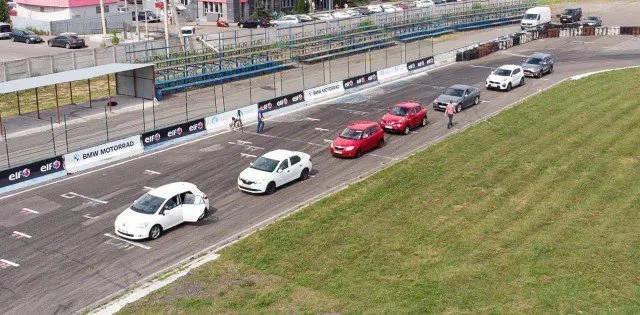
Why is it not easy to collect this "magnificent seven"? Firstly, because not everyone is ready to spin circles on the Chaika highway in Kiev for half a day of their working time, and secondly, according to the experimental conditions, absolutely all fuel in the tank and on all pipes and fuel lines is wasted, that is, the cars are completely stopped. And not everyone would like this to happen to his car. For the same reason, only gasoline modifications were chosen, because after such an experiment it will be more difficult to start a diesel engine.
As soon as the car stops, it will be possible to refuel it with exactly 1 liter of gasoline, which is enough to get to the gas station next to the highway. And there he comes to the top. Thus, the fuel tanks of all participants are almost completely empty (i.e. the error will be minimal) and it will be possible to determine how much they actually fit.
Double experiment
As expected, all cars arrive with minimal but varying amounts of petrol in the tank. In some, the on-board computer shows that they can drive another 0 km, while in others - almost 100. There is nothing to do - the drain of "unnecessary" liters begins. Along the way, it becomes clear how far cars with light can go, and there are no surprises.
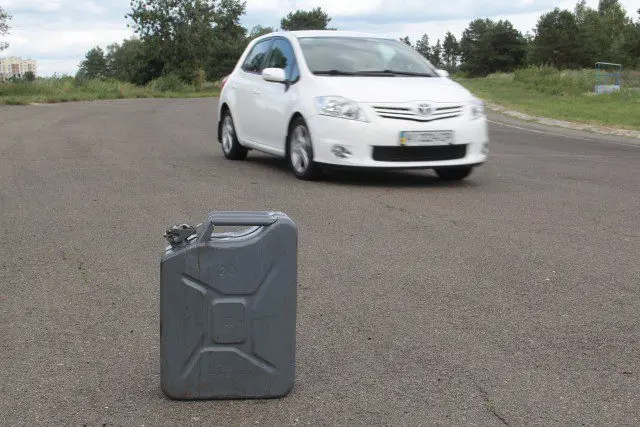
The KIA Sportage, which has the most gas in its tank, has the most laps in the small Seagull ring. Renault Logan also makes many laps, but in the end it stops first. Pour exactly a liter into it. After a few laps, the fuel in the tank of the Nissan Juke and Skoda Fabia, and then of the other participants, runs out. Except Toyota Auris! She continues to circle and, apparently, is not going to stop, although to speed up the process, her driver increases the pace! And this despite the fact that before the start of the experiment, her on-board computer showed 0 km (!) Of the remaining run.
After all, her fuel runs out several hundred meters before refueling. It turns out that Auris with a CVT gearbox manages to drive 80 km from scratch! The rest of the participants ride with a less "empty" tank, driving an average of 15-20 km. This way, even if your car's fuel indicator is on, you can be sure that you still have a range of around 40 km. Of course, this depends on the driving style and should not be overused regularly.
Pour "to the mountain"!
Before refueling cars at a gas station, which is located about 2 km from the highway, the organizers check the accuracy of the columns using a technical tank. How this happens can be seen in the video below. It should be borne in mind that the permissible error of 10 liters is +/- 50 milliliters.
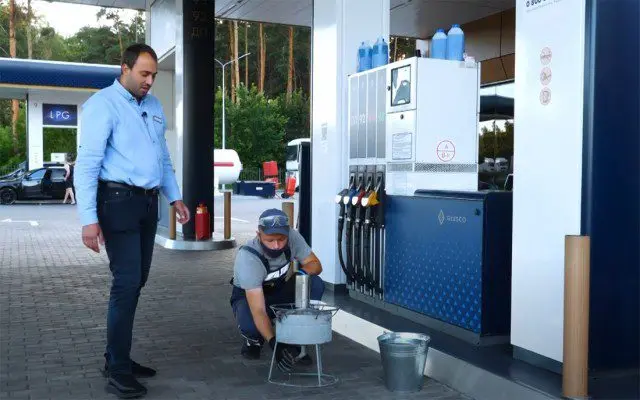
Speakers and participants are ready - charging begins! KIA Sportage first "quenches thirst" and confirms the assumptions - the tank holds 8 liters more than the declared 62. Only 70 liters, and the top one is enough for about 100 km of additional mileage. Skoda Fabia, with its compact dimensions, holds an additional 5 liters, which is also a good increase! Total - 50 liters "up".
Toyota Auris stops with surprises - only 2 liters on top, and Mitsubishi Outlander is completely satisfied with its "extra" 1 liter. The Nissan Juke tank holds 4 liters on top. But the modest Renault Logan remains the hero of the day, in a 50-liter tank of which 69 liters are enough! That is a maximum of 19 liters! With a consumption of 7-8 liters per hundred kilometers, this is an additional 200 kilometers. Quite good. And the BMW 5 Series is precise in German – 70 liters claimed and 70 liters loaded.
Special project “Full tank” | How much fuel does a car tank actually hold?
In fact, this experiment turned out to be both unexpected and practical. And this shows that the volume of the fuel tank indicated in the technical characteristics of the car does not always correspond to the truth. Of course, there are vehicles with high-precision tanks, but this is rather an exception. Most models can easily hold more fuel than advertised.
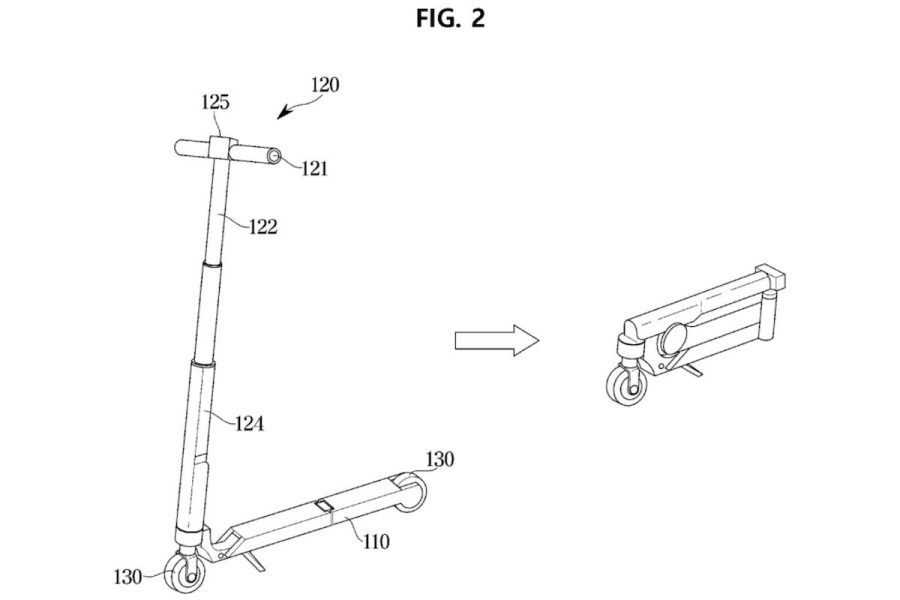
2 comment
Alain
<>
il faut inverser les nombres 50 et 69 car là on comprend qu’on a mis seulement 50 L dans un réservoir de 69 L ( – 19L)
>>But the hero of the day is the humble Renault Logan, which has 69 liters in its 50 liter tank!
eboiro
Not easy to understand the methodology or the results given the translation, too bad, but hey, we're getting there. The conclusion is without appeal, the simple observation of full in full too.
It is not said / it must be assumed that the exact 1L poured after dry docking was consumed in a comparable way by the different cars to cover the km to the pump. Let's assume to maximize the variable conditions that at 5 to 9L/100km on km, there remains 0.9 to 0.82L which makes at this level a variation 2 to 4 higher than the pump /if I understand their data '50mm'/. It's all very acceptable. It is also not said that this '1L'/actually 0.9 to 0.82L/ is of course added in full during the test, to obtain a full effective max. Otherwise it adds as much inaccuracy of the volume /and in cummul 1L/. But hey, all that remains very acceptable for the conclusion.
A summary table of values would have been much simpler and clearer. Tank flight announced; average consumption per 100km & volume corresponds to the exact 1L for 2km; flight paid to refuel; total flight cad with 0.82 to 1L; actual/announced maximum volume difference.
A precise weighing method on the whole car / first dry with 1L to go to the pump, then fully loaded minus 1L to leave the pump, gasoline density, would have been simpler and more precise: an industrial scale measures 100g to 1kg for 1 to 10 tons weighed!